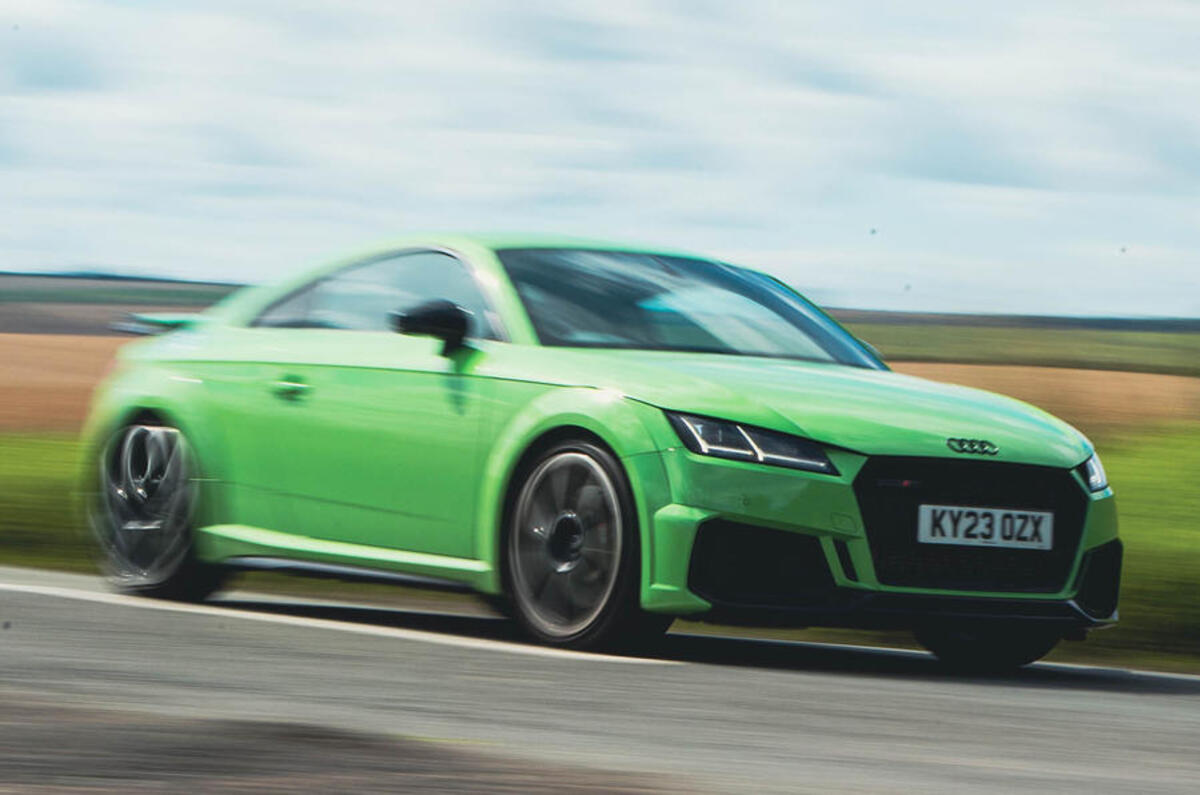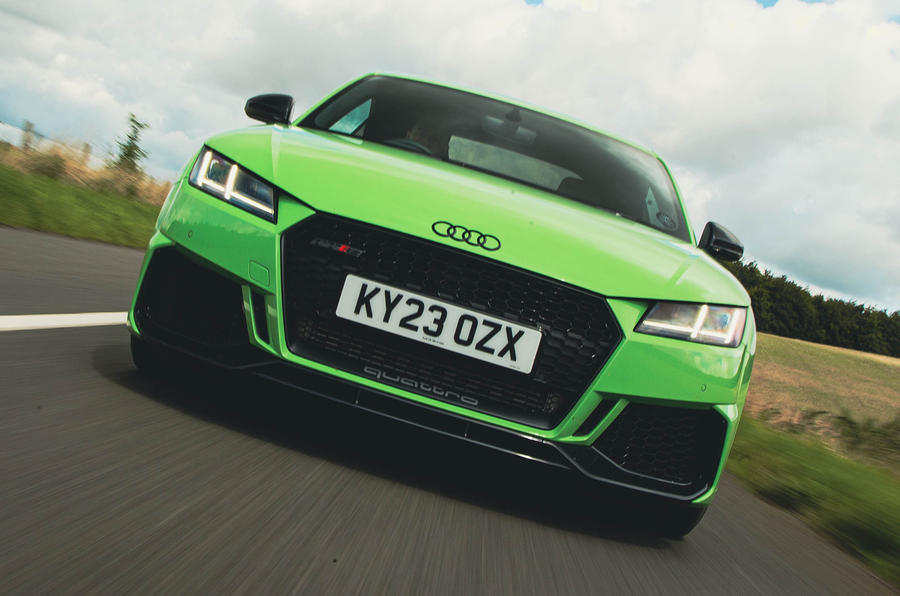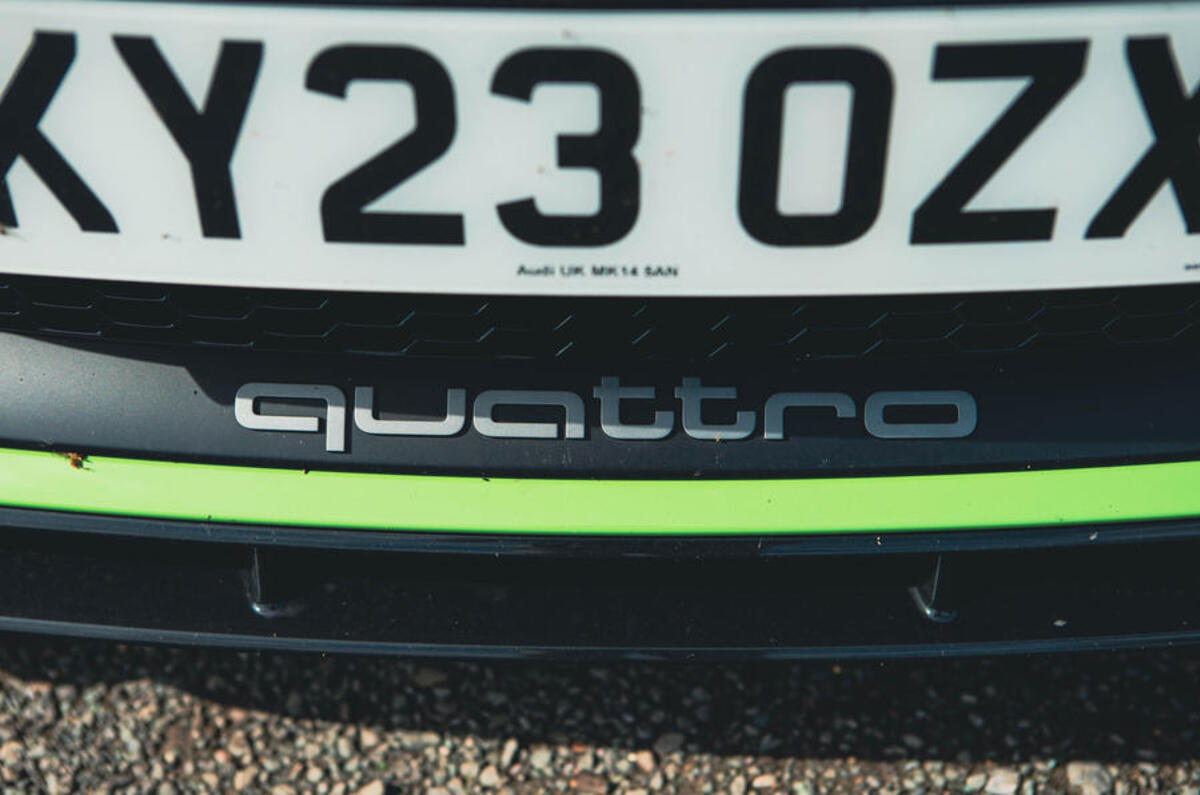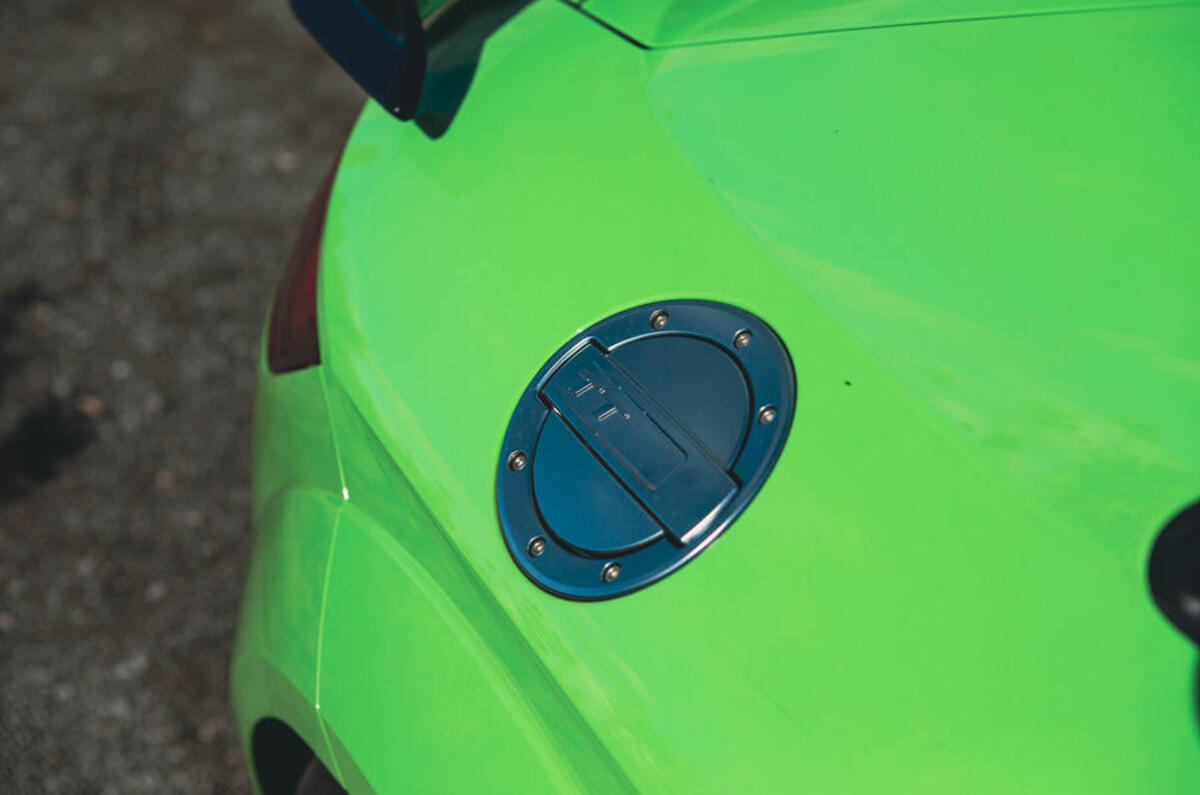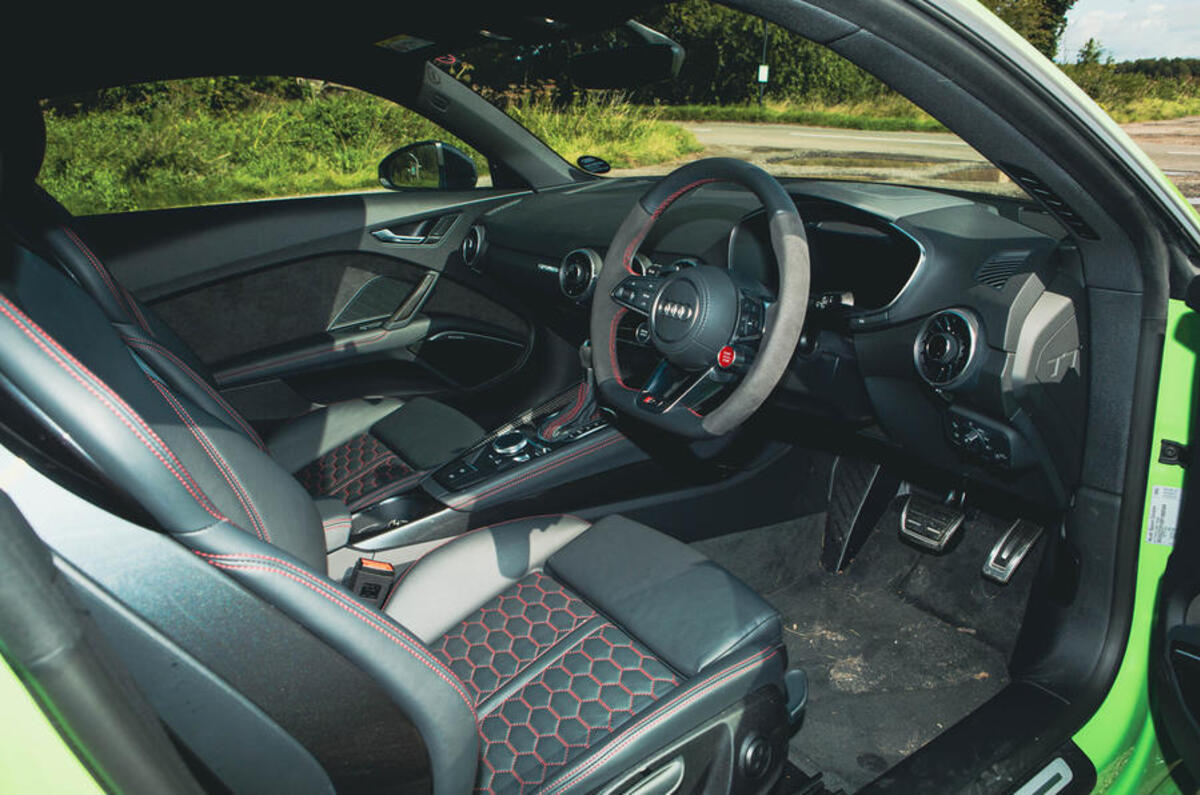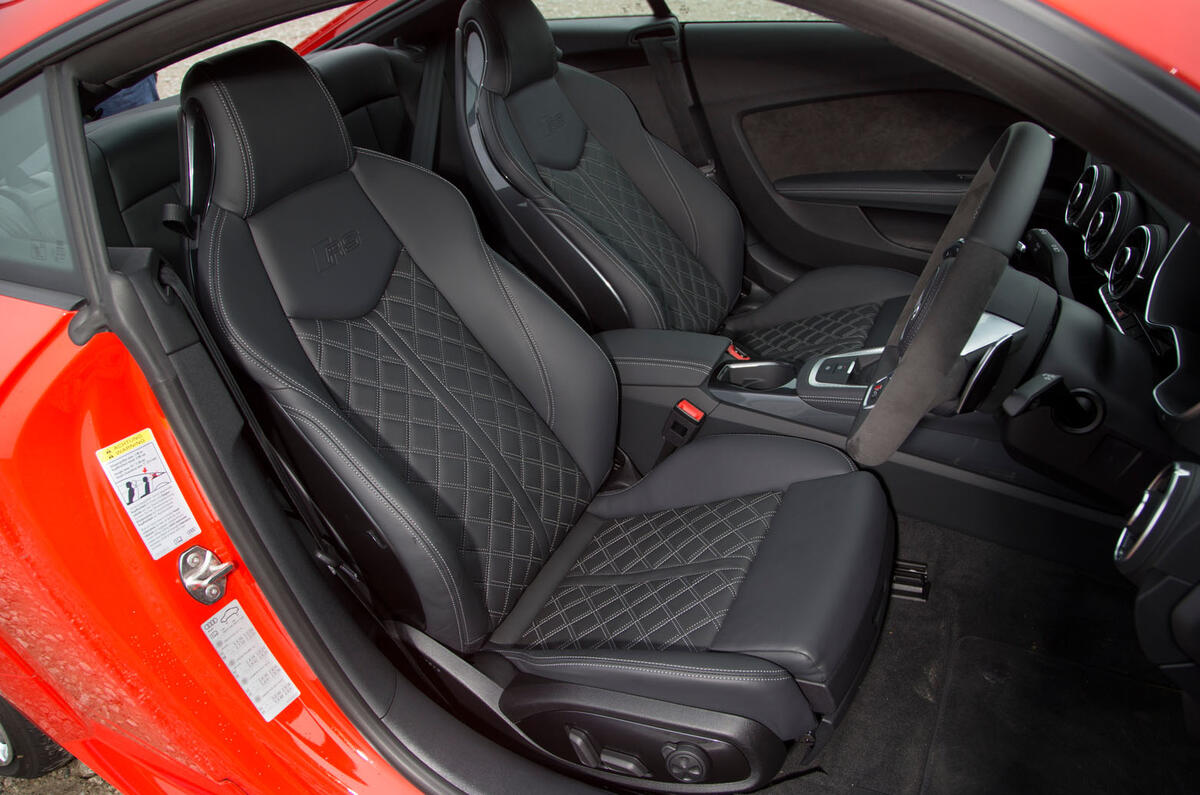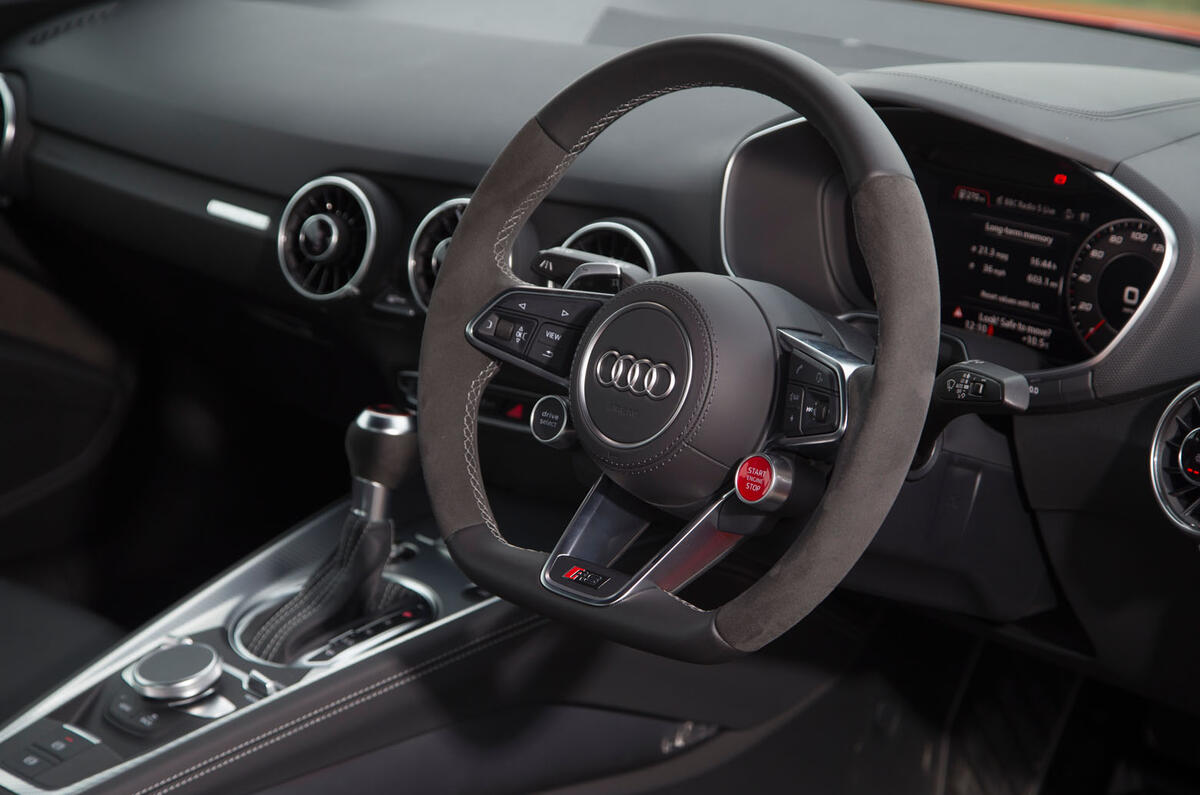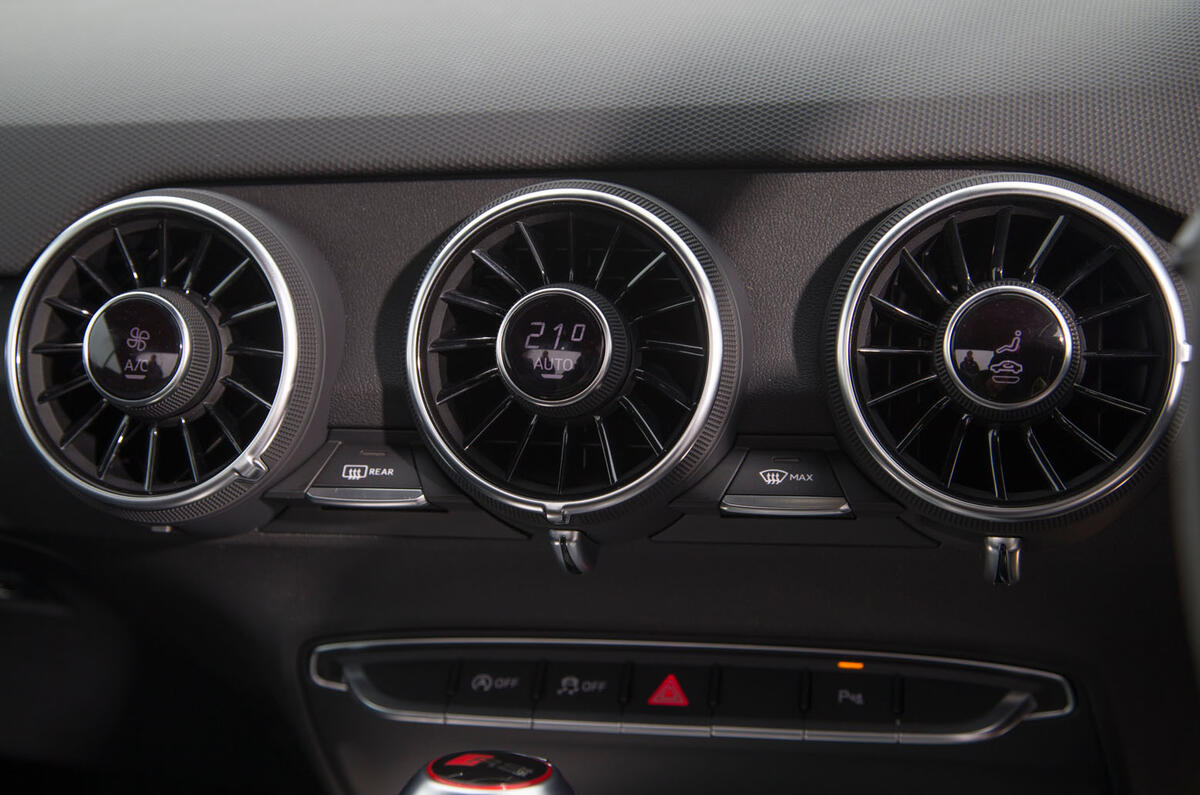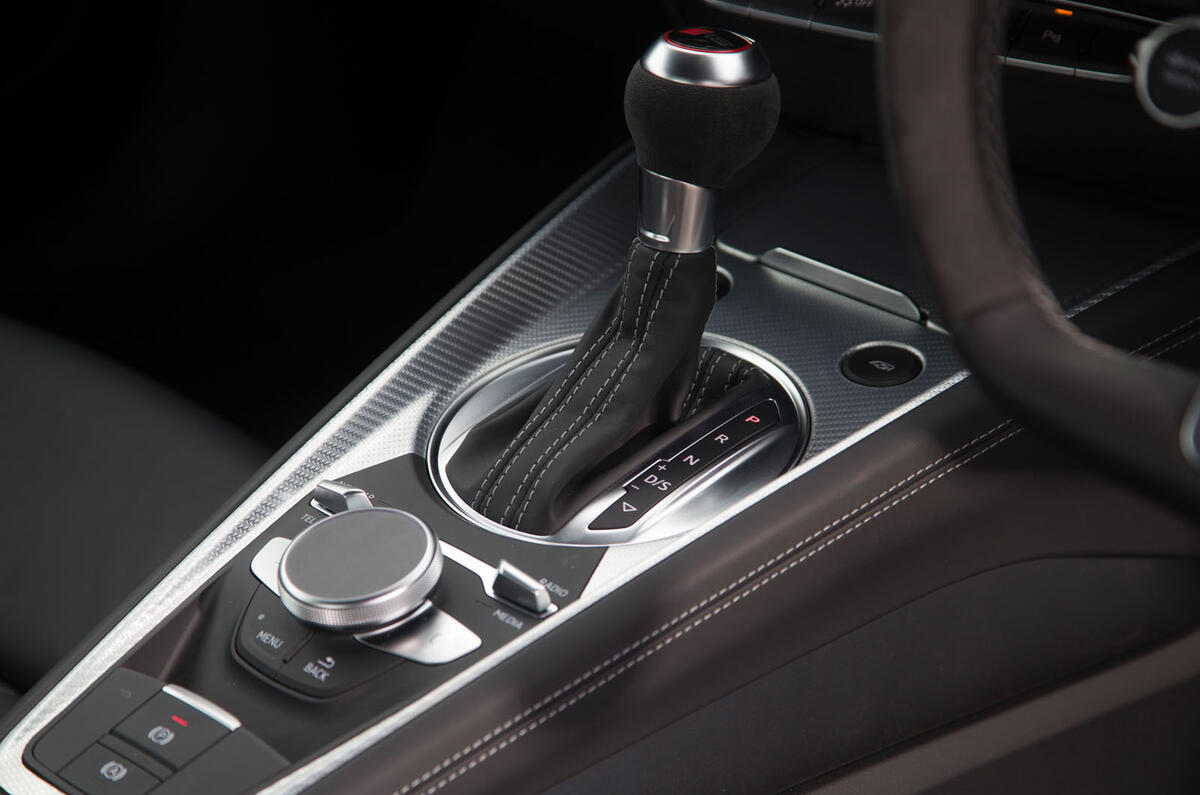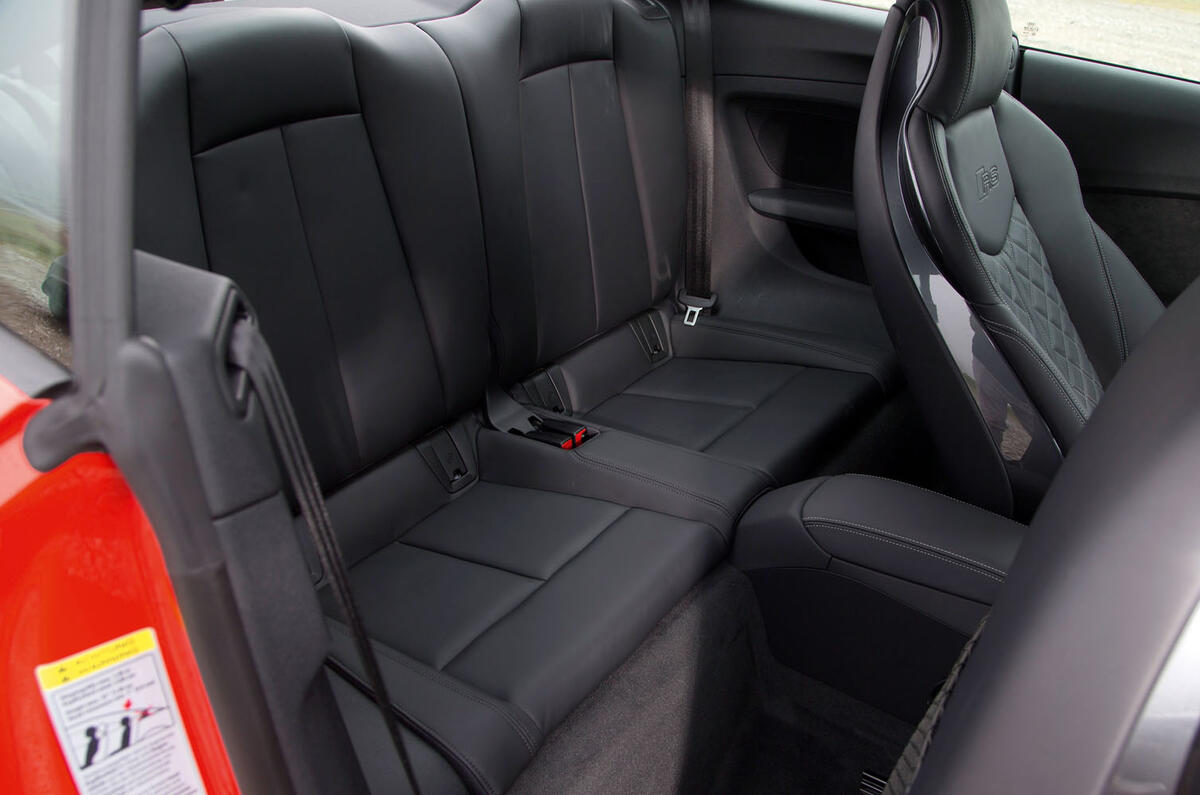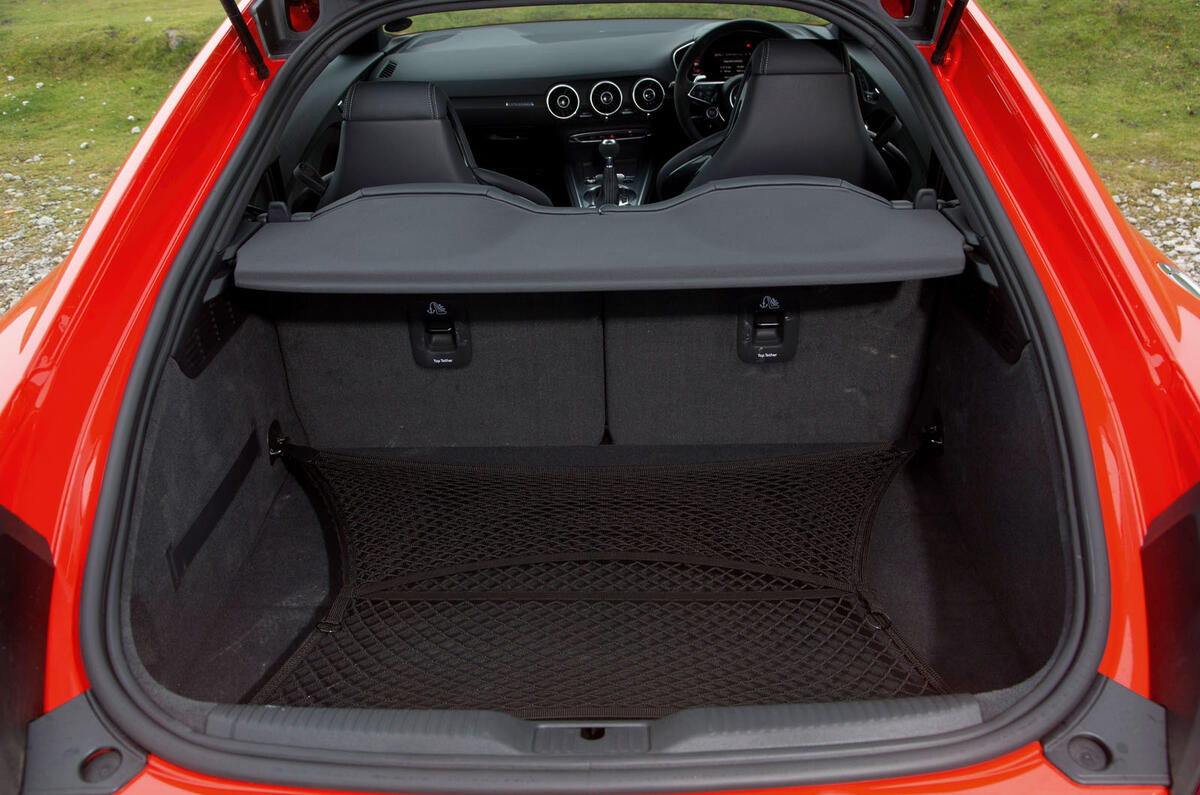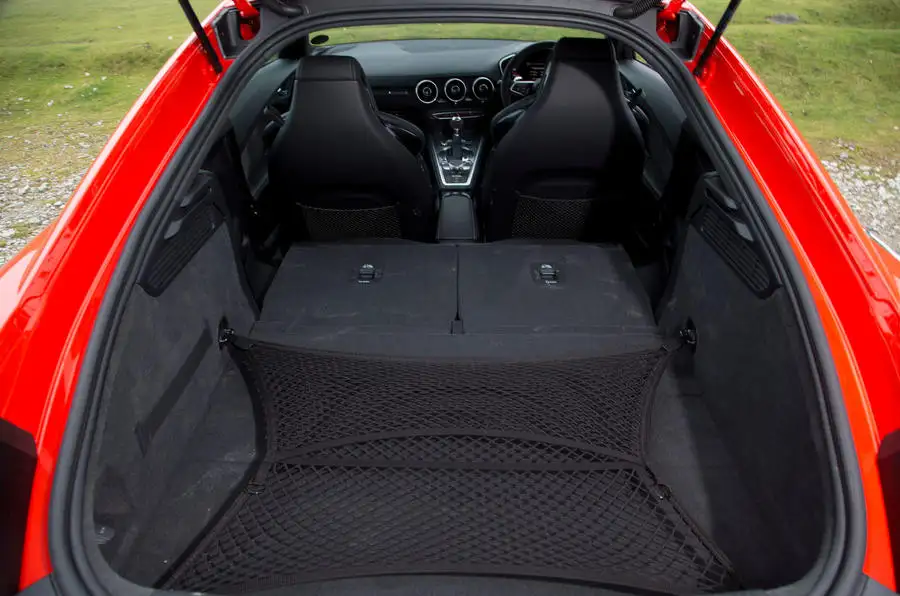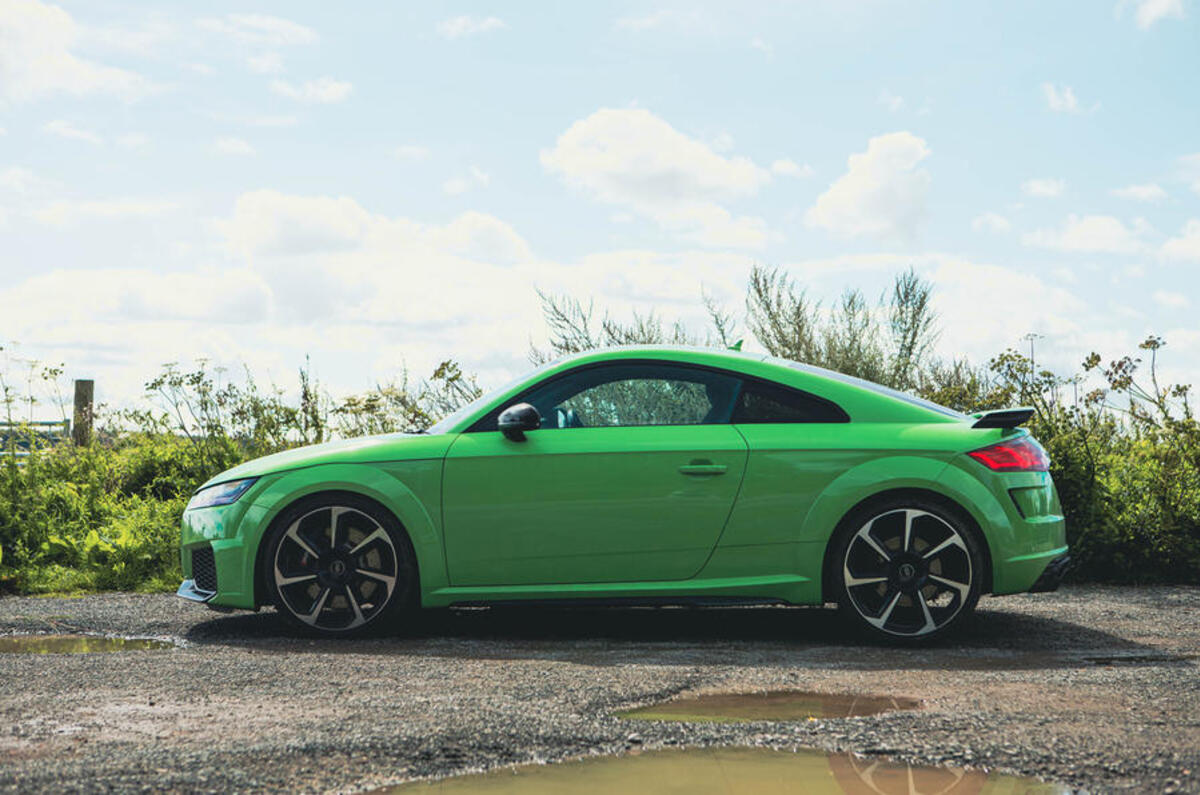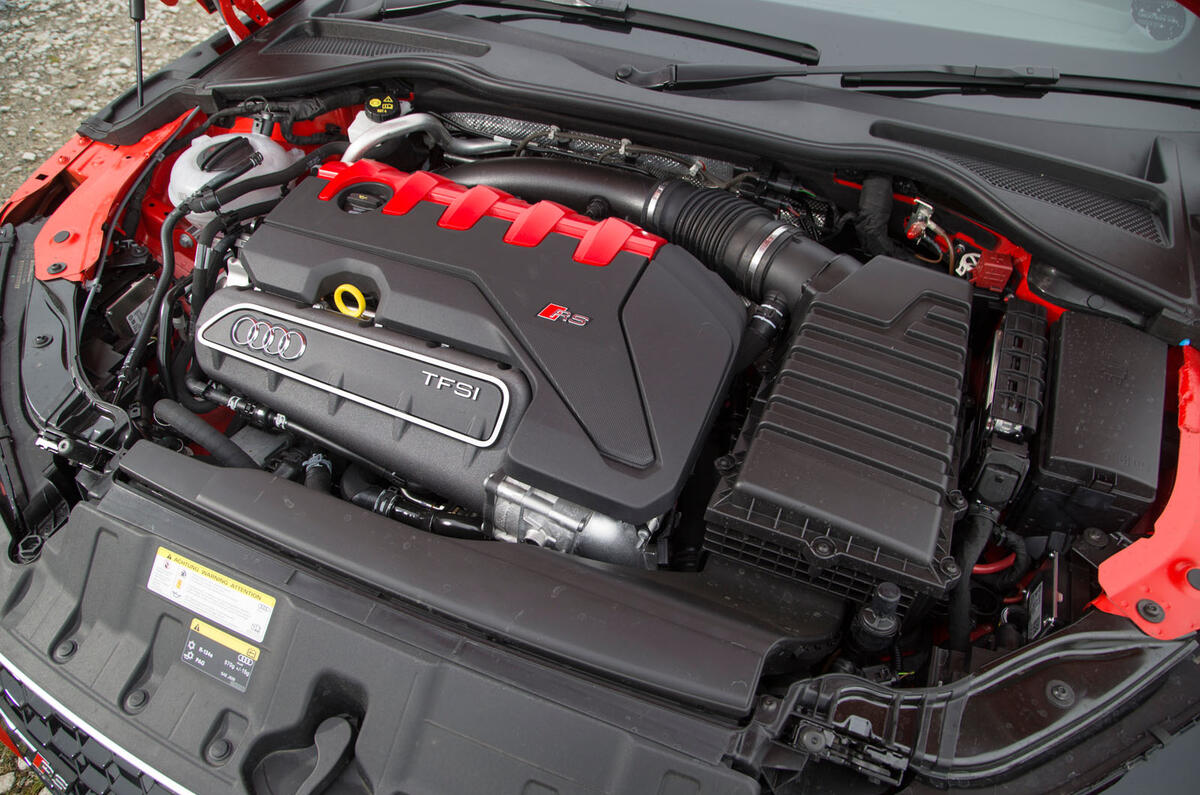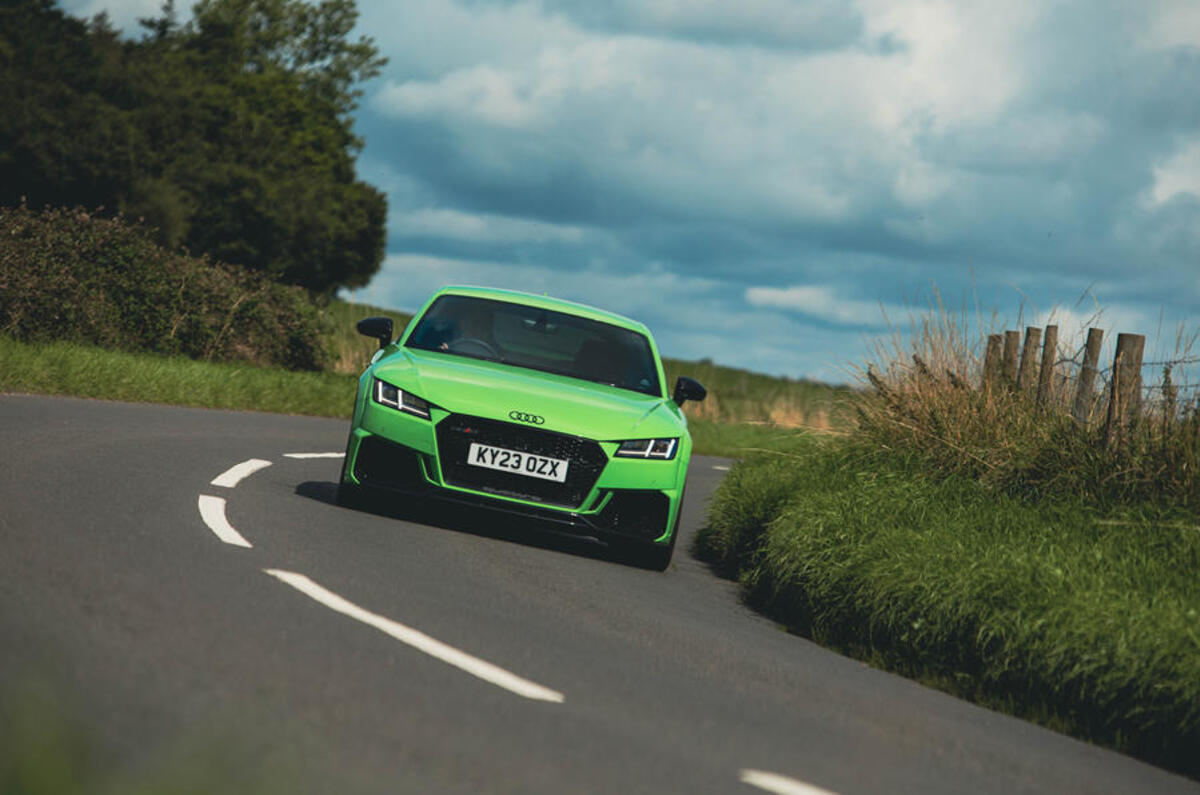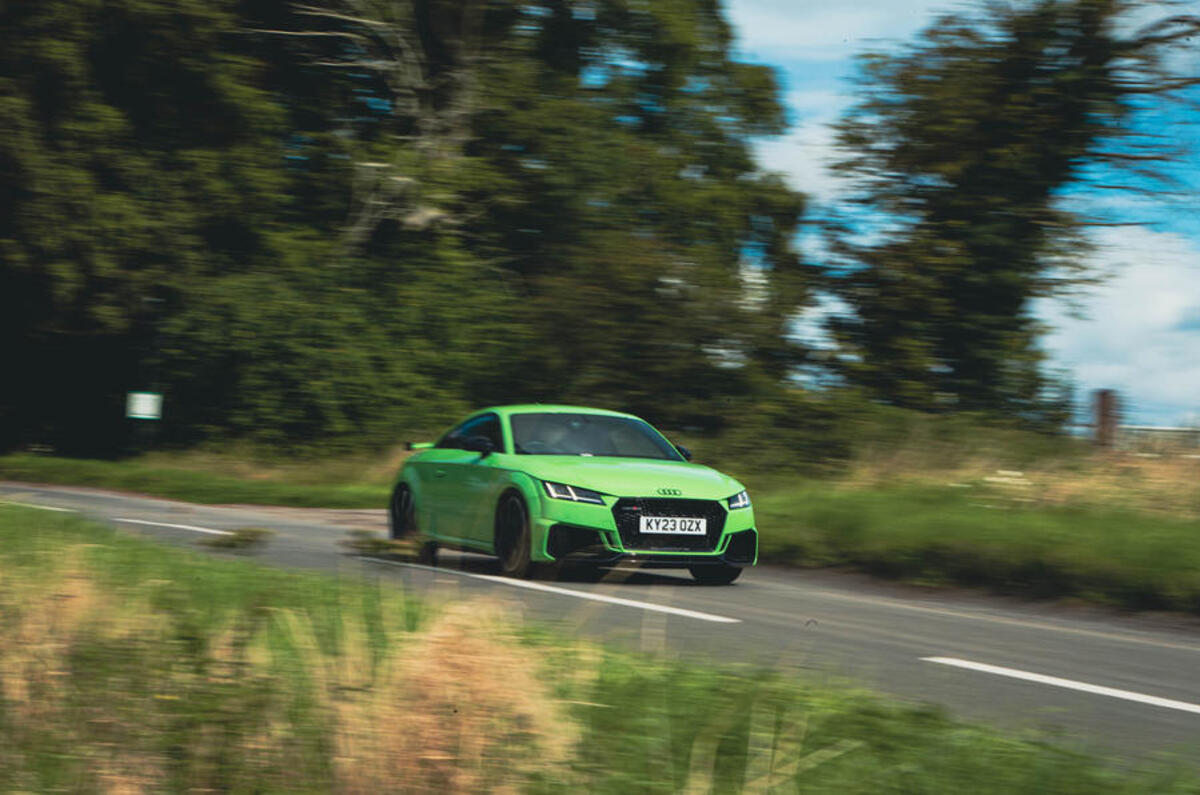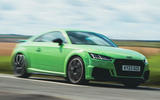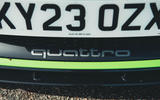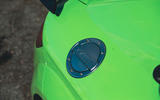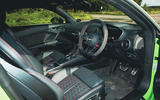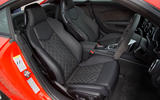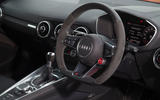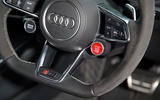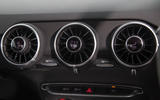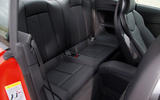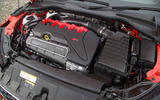Time and again, on both rougher roads and smooth and when driven in differing conditions, the TT RS’s chassis and steering gives you the same uncanny impression as its incredible powertrain: that going like a rocket is as nothing to it; that it could easily go even harder and do more if Audi Sport only decided to let it.
Which, we need hardly point out, is a very difficult quality indeed to engineer into a 395bhp sports car with mechanical links to a humble hatchback and a driveline that will always instinctively favour the front.
Open the car’s throttle wide on an uneven road, with camber and steering angle in the mix, and you’ll feel not a hint of steering corruption through the car’s downsized rim; neither bump steer nor torque steer nor tramlining seem to affect the car at all.
And although the suspension is evidently stiff enough to turn the car’s huge grip levels into direct, roll-free handling, it deals with smaller and gentler lumps and bumps quite well, declining to feel particularly aggressive in its ride until intrusions suddenly make it become a bit wooden.
And so, on all but the most testing B-roads, the TT RS is absurdly easy to drive quickly. It doesn’t exactly dive into bends incisively, but it does corner flat and fast and with impressive directness.
And while it does so with nothing to speak of in the way of steering feel or delicate adjustability, it retains a tenacious hold on the road at all times.



